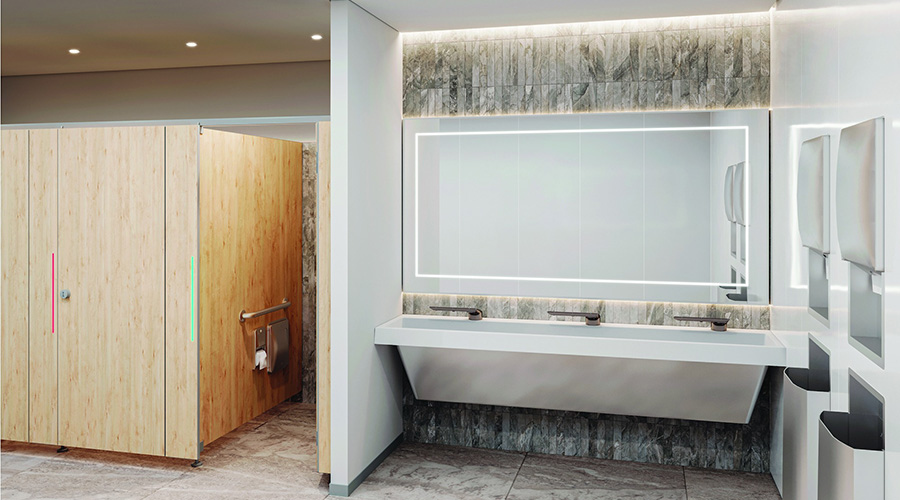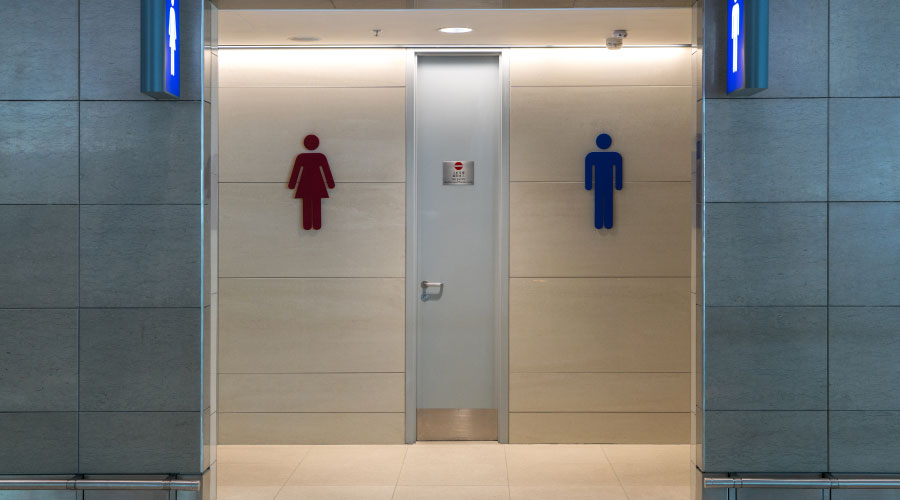Restrooms: H1N1 Forces Managers to Refocus on Hygiene
Not long ago, restroom cleaning and maintenance generated a fairly low-key discussion. Common talking points for maintenance managers and their staffs and peers included ways to clean surfaces effectively, reliable fixtures and accessories, and water conservation. Then came H1N1.
"H1N1 is the scare that got the most publicity, more than MRSA," says Michael Robert, vice president of sales and technology with American Dryer, referring to methicillin-resistant staphylococcus aureus (MRSA), a bacterium responsible for several difficult-to-treat infections.
The effects on institutional and commercial facilities were widespread. The public started asking questions about preventing the spread of H1N1. Managers and others involved in facility management revisited and updated their plans not only for responding to emergencies, but for designing, renovating, operating, and cleaning facilities.
Now, says Stephen Rosen, co-founder of Pacarc LLC, which distributes a high-speed hand dryer, "People are putting together or renovating facilities and restrooms because they are more sensitive about hygiene now, and because they are hearing more about hygiene from their customers."
Changing Attitudes
H1N1 is the latest in a string of outbreaks that have refocused the attention of the general public on restroom hygiene.
"There has always been something, an event du jour, that raises the public's awareness of hygiene," says Alan Gettelman, vice president of marketing with Bobrick, which manufactures hand dryers, soap dispensers, and related accessories. That awareness has quickly turned into questions about protection against sickness.
H1N1 is "a perfect example of where we had massive amounts of questions from users," Rosen says.
Many questions dealt with strategies for minimizing or eliminating the risk of infection related to restrooms, and the terms touchless and hands-free have come to dominate the conversations.
"Customers don't want to put their hands where someone else's wet hands have been," says Robert with American Dryer, which makes hand dryers.
From flush valves and dispensers to hand dryers, managers seek products that eliminate the need to touch surfaces.
"Consumers are gravitating toward products that promote cleanliness by reducing the chance for cross-contamination," says Younette Sleet, director of product management with Wausau Paper, which makes paper dispensers, and folded and rolled towels. "This includes touchless alternatives, such as automated flush valves, faucets, and paper- and soap-dispensing systems."
While such concerns traditionally pertained to managers in hospitals, all facilities now have joined the conversation.
"Hospitals, schools, and office buildings all seek to ensure the health of their patrons or tenants, and products that reduce cross-contamination play an important role," Sleet says. "Touch-free products greatly reduce the spread of potentially dangerous bacteria, since users are not touching common surfaces, which are most likely to contribute to the spread of illness.
Cyrus Boatwalla, director of marketing with American Specialties, says largely because of H1N1, managers now know more about the antimicrobial and antibacterial properties of materials and products.
"It's something added to the conversation, especially in schools," says Boatwalla, whose company makes soap and paper dispensers, waste containers, and related restroom accessories.
William Gagnon, director of marketing with Excel Dryer Inc., which makes hand dryers, agrees managers in schools have been especially vigilant.
"Since schools are often a hotbed for germ-sharing, it's important to provide students with a hands-free, hand-drying option that is reliable and gets them in and out of restrooms efficiently, with as few touch points as possible," he says.
Related Topics:













